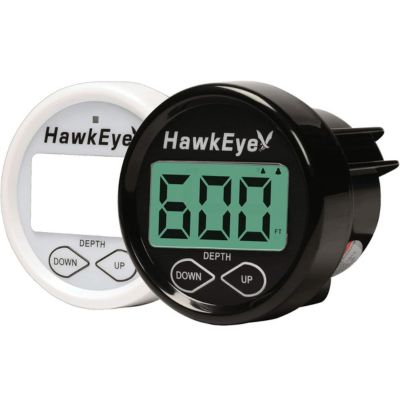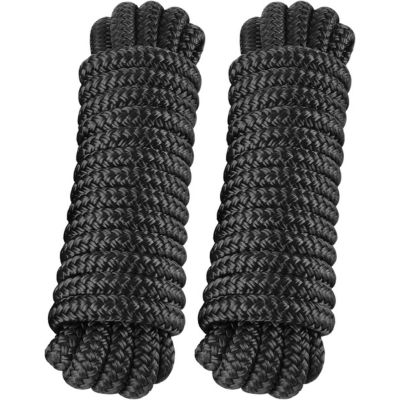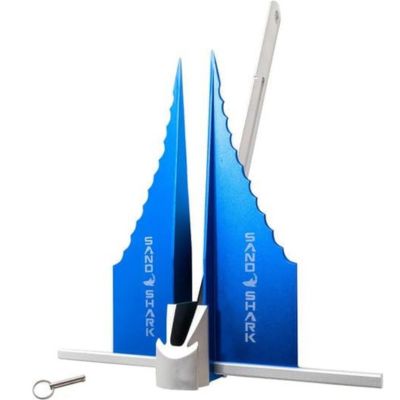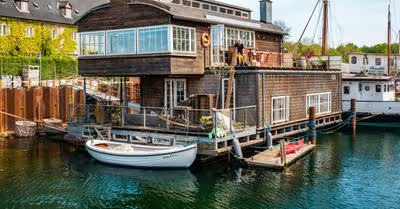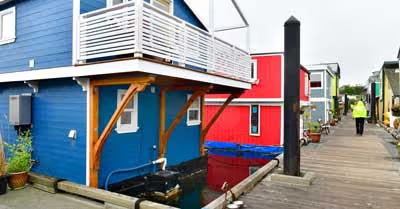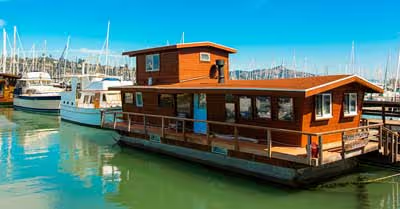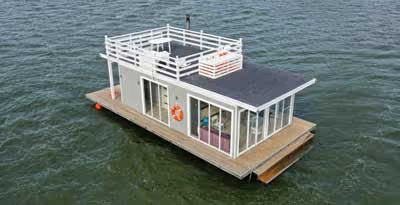
Key Takeaways
- To tie up a houseboat, select a sheltered, calm location for docking.
- Prepare dock lines and fenders in advance.
- Use cleat hitches and spring lines for secure tying.
- Properly anchor when docking away from a dock.
- Consider the regional rules and permits before tying your houseboat.
Tying your houseboat ensures your safety and enjoyment during a water-bound getaway. But how do you tie up your houseboat securely?
To securely tie up your houseboat, choose a sheltered spot, prepare ropes and fenders, use cleat hitches, and anchor the houseboat properly. Always double-check the tightness of ropes, fender positioning, and anchor security to maintain safety and stability during your stay.
As a houseboating enthusiast, I deeply understand the safety considerations involved in securely mooring a houseboat. My practical experience ensures that the insights I provide are accurate and reflect best practices. As such, I’ll offer reliable, expert guidance that enhances your knowledge for a safe and enjoyable houseboating experience.
How To Tie Up Houseboat
Tying up your houseboat securely is essential in ensuring it stays put, whether you're ducking into a cozy cove or docking at a bustling marina. You'll need the right techniques and a little know-how to keep it safe from winds and wakes.
Let's delve into how you can properly tie up your houseboat, turning a complex task into a simple, stress-free process.
Choose the Right Spot
DepthTrax 2B Boat Mount In Dash Digital Depth Finder
When you're looking to tie up your houseboat, picking an ideal location is crucial. Aim for a spot that's protected from high winds and away from heavy traffic to minimize the impact of a wake.
If you're docking near the shoreline, it's essential to ensure there is sufficient water depth. Checking local charts or using a depth finder can help you gauge the water's depth accurately.
This precaution prevents the bottom of your houseboat from scraping against the lake or riverbed, which can cause damage.
If you prefer docking in a harbor or marina, make a thoughtful selection. Choose a slip dock that offers ample space for your houseboat and is easy to maneuver into.
Prepare Your Ropes
J-FM TWNTHSD Dock Lines
Before docking, ensure all ropes, also known as dock lines, are accessible and free from knots or damage. You'll want a mix of bow lines, stern lines, and spring lines.
Use breast lines for lateral control and to keep the boat close to the dock. Having fenders ready is also key to protecting the side of your houseboat as it comes alongside the dock.
Secure the Houseboat to the Dock
As you approach the dock, use a cleat hitch to tie your lines. This reliable knot reduces the risk of lines slipping off the dock cleat.
Begin by attaching a bow line and a stern line. These lines hold your houseboat in place relative to the dock and prevent it from moving forward or backwards.
Next, add spring lines to further secure your vessel. Spring lines help control lateral movement and keep your houseboat properly aligned with the dock.
Anchor the Houseboat
SandShark Shark-Bite Fluke Boat Anchor
In situations where you are tying up your houseboat away from a dock, such as at a beach or an open water area, you'll need to use different anchoring techniques.
If anchoring at a beach, you should use sand anchors. Drive these anchors deep into the ground and tie ropes firmly to each one, creating a stable anchor point onshore.
It's crucial to ensure that these anchor points are secure and won't shift due to changing tides, currents, or unexpected movements.
In open water, use a weight anchor that is appropriately sized and designed for the conditions. Position the anchor at a 45-degree angle to provide optimal holding power.
This angle ensures that the anchor digs into the bottom effectively and prevents your houseboat from drifting or moving.
Double-Check for Security
After securing all lines, take a moment to double-check that each rope is tight and properly tied. Be sure that fenders are in the correct position to prevent the boat from rubbing against the dock.
Regularly mark any changes in position or rope tension, especially if you're settled in an area with changing tides or frequent boat traffic. This vigilance ensures ongoing security for your houseboat. Check out this video for a detailed explanation of how to tie up your houseboat.
Factors to Consider When Tying Up a Houseboat
When preparing for a houseboat trip, the excitement can be palpable, especially if you're heading to scenic places. It's easy to get caught up in the fun of planning fishing trips or imagining relaxing on the back deck.
However, an essential part of your adventure is knowing how to secure your floating retreat properly. It's not just about tying knots; you should consider several factors to ensure safety and prevent unwelcome drifts.
Below is a table summarizing the key factors to consider when tying up your houseboat and why they're significant:
Navigating Regional Regulations and Mooring Etiquette for Houseboats
When you're planning a houseboat vacation, it's crucial to consider the serenity and the complex tapestry of rules and unspoken rituals that vary by location. Every lake, river, and marina has its own set of regulations on mooring and etiquette.
Familiarize yourself with local permits and no-tie zones to avoid fines and ensure a smooth houseboat vacation:
- Permits: Always check if the body of water requires a mooring permit.
- Mooring Restrictions: Many lakes have designated areas where tying up is permitted; avoid commercial routes and environmentally protected zones.
- Customs: Engage with the boating community for advice. They're the gatekeepers to unpublicized practices.
- Environmental Care: Take special care in fragile ecosystems – avoid beaching in non-designated areas.
Frequently Asked Questions
When preparing to secure your houseboat, knowing what to anticipate and how to manage various docking scenarios is crucial. We'll address some common queries to help you tie up your vessel confidently and safely.
Are there special considerations for tying up a houseboat in changing water levels?
Yes, tying up a houseboat in areas with fluctuating water levels requires particular attention. Secure the boat with lines that allow for some movement and adjust these lines periodically as water levels rise or fall.
How often should the security of a houseboat's mooring lines be checked?
The security of a houseboat's mooring lines should be checked regularly, at least daily, and more frequently if there are changes in weather or water conditions.
Are there some tips for first-timers on stabilizing a houseboat while docked?
For first-timers, it’s essential to keep the houseboat stable by evenly distributing weight and using suitable mooring lines. Make use of spring lines for added stability and to prevent excessive movement.



